NOVA Air Scoop is an optimised air intake, which increases the internal wing pressure. NOVA's Air Scoop principle is similar to the ram-air inlet duct on a sports car: increased airflow produces higher pressure. Higher internal pressure in a paraglider means improved performance through increased structural stability and collapse resistance.
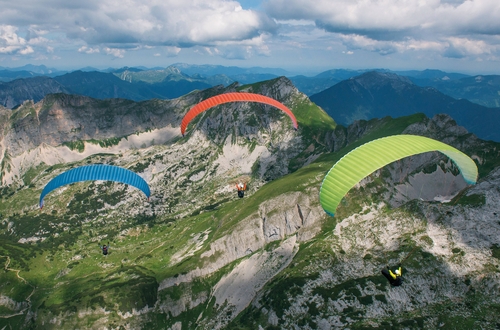
A light, high-tech wing. Structurally optimised slots in the wing's interior, high-quality lightweight materials and slim risers allowed a weight reduction of 800 g compared to the ION 5.
The canopy construction uses mainly the latest generation of the Porcher Skytex 27 light cloth. The double-sided coating of this cloth provides the same proven UV resistance as current standard cloths that are significantly heavier.
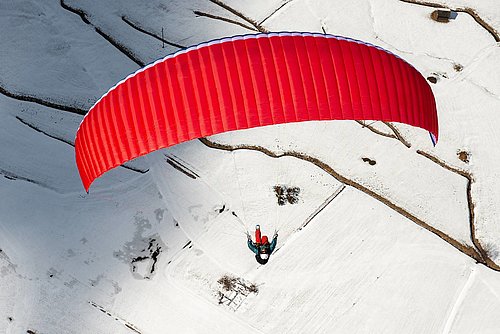
Performance included. On launch the lightweight wing impresses with its good-natured take off behaviour. In flight, the precise and agile handling allows an easy entry into thermals and facilitates an intuitive flying style. The canopy provides clear feedback that is easy to understand, making it a pleasant companion for beginner and experienced pilots alike. The performance in glide across the entire speed-range is well above its predecessor the ION 4. It is the combination of these features that make the ION 5 Light a good choice for long but relaxed cross-country flights.
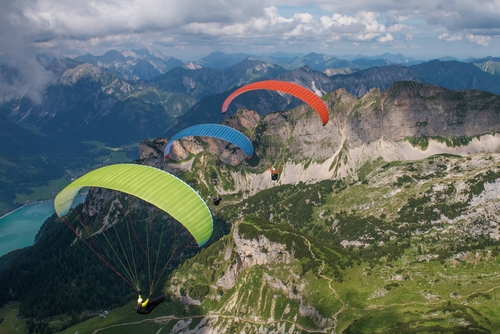
One wing for all occasions. The ION 5 Light is a glider for all occasions: whether it is a long thermal flight, a hike & fly adventure or simply soaring with friends. The ION 5 Light supports you in achieving your goals whilst giving you the peace of mind of a wing with a high degree of passive safety.
Target Group
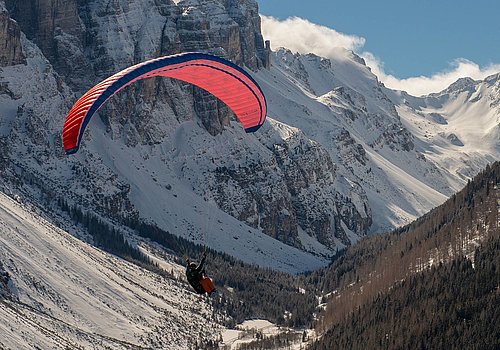
The ION 5 Light is suitable for a wide spectrum of pilots. On the one hand, it offers a high degree of passive safety and is therefore suitable for the use in most flying schools. On the other hand, the glider has impressive performance, which makes the ION 5 Light a wing for every occasion: fun to fly but with inspiring climbing capabilities and an agile handling. The wing is suitable for talented beginners as well as experienced pilots with cross-country ambitions. From each ION generation to the next, the demands on the pilot have remained the same. The ION 5 Light stays true to its low-end EN B roots whilst offering the performance of a cross-country machine.
Small XXXS size for flyweights
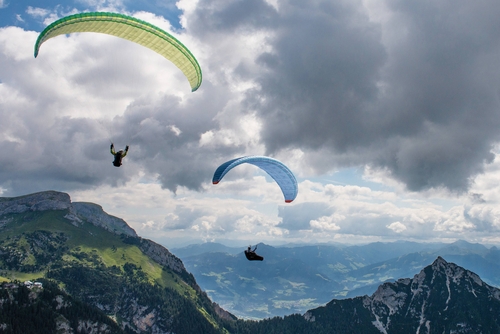
It is important to us to build smaller sized wings with a weight range starting at 50 kg. Instead of just scaling down a larger wing, we considered in great depth the technical peculiarities of small wings to ensure that the XXXS had a balanced and suitable brake configuration which matches the size of the canopy. Therefore, the ION 5 Light XXXS is a wing with its own, fully-fledged specification allowing both women and men to enjoy its excellent performance, safety features and impressive agility. This is our contribution to equal opportunities in flying.
Useful information
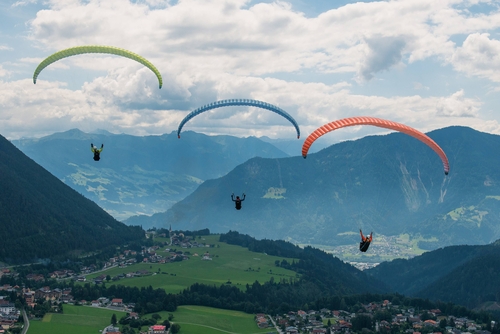
- Like the MENTOR, the ION has become a class of its own. For many years, we have been making wings for pilots with great ambitions that demand a high level of passive safety. While we keep improving on the performance, handling and feel of the ION range, this has not made our wings more demanding to fly.
- New wing tip design: The profile has been optimized, the chord has been reduced and an additional cell has been added. The result is increased glide performance.
- Latest cloth innovation: Porcher Skytex 27 Classic 2 cloth is coated on both sides and therefore offers high durability at a low weight.
- Latest line materials: The PPSL65 from Liros are the thinnest sheathed lines on the market. We use them for the brakes and stabilo lines where they help us to reduce drag and make it easy to check lines before take-off.
- Optimized ballooning calculation: The wing’s ballooning significantly influences the stability, performance and handling. The ION 5 Light benefits from new modelling and simulation tools which helped us to improve the wing’s stress distribution.
Impressions
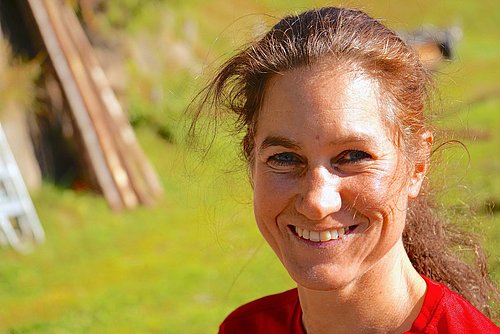
Vera Polaschegg, para-mountaineer, cross-country and competition pilot weighs less than 50 kg. What she says about the ION 5 Light XXXS:
“With the ION Light 5 XXXS, NOVA has designed a wing with which 50 kg girls - and light boys - can have a relaxed hike & fly experience, without the hassle of having to carry water ballast!
Finally, we have the opportunity to dart like an arrow, rather than be blown like a leaf in stronger winds. And that on an EN B wing! I feel so safe on this wing that I have flown in thermals with just one hand whilst taking photos and videos with the other. With the XXXS we don’t land 5 km behind our larger colleagues, because the glide is unusually good for this little size. Another advantage: it turns very well without digging in.
And for the heavier pilots amongst us: the ION Light 5 XXXS is surely also a brilliant fun wing for strong wind days on the dune or hike & fly in strong wind conditions.”
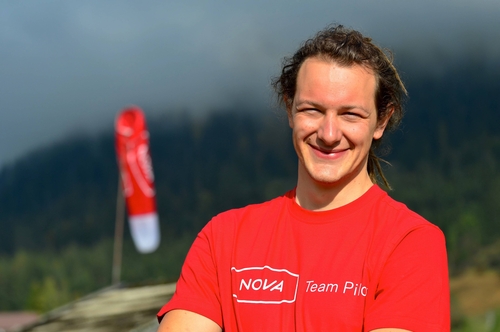
On the 19th of July 2018, NOVA team pilot Berni Pessl flew the longest FAI triangle ever flown in Slovenia (244.37 km) on a NOVA ION 5 Light: With this flight he proved yet again how high-performing a low-end EN B wing can be in the hands of a excellent cross-country pilot. On the 16th of June he was already able to do a 145 km flight from the Stallersattel – with an average speed of over 30 km/h! Until he was washed down near Sterzing due the northerly wind, the Austrian pilot was able to keep up with several high-performance wings piloted by some world-class pilots.
Read the full story here
Berni Peßl
NOVA Team Pilot
Technical data
| XXXS | XXS | XS | S | M | L | |
| Number of cells | 51 | |||||
| Projected span | 7,75 | 8,07 | 8,50 | 8,90 | 9,29 | 9,66 |
| Projected area | 16,86 | 18,52 | 20,51 | 22,49 | 24,51 | 26,52 |
| Projected aspect ratio | 3,52 | |||||
| Flat span | 10,18 | 10,67 | 11,20 | 11,74 | 12,26 | 12,74 |
| Flat area | 20,00 | 22,06 | 24,31 | 26,69 | 29,12 | 31,44 |
| Flat aspect ratio | 5,16 | |||||
| Line diameter | 0,7 / 0,8 / 1,0 /1,2 / 1,3 | |||||
| Line length | 5,95 | 6,24 | 6,57 | 6,87 | 7,17 | 7,46 |
| Total line length | 203 | 215 | 227 | 239 | 248 | 259 |
| Max. chord | 2,44 | 2,57 | 2,70 | 2,82 | 2,95 | 3,05 |
| Min. chord | 0,45 | 0,47 | 0,50 | 0,52 | 0,54 | 0,56 |
| Weight | 3,1 | 3,35 | 3,6 | 3,85 | 4,1 | 4,3 |
| Recommended take off weight | 50-70* | 55-80 | 70-90 | 80-100 | 90-110 | 100-130 |
| Certification (EN/LTF) | B | B | B | B | B | B |
| *certified from 50-80kg with EN B. | ||||||
FAQ
This depends on what type of flying you do. If you are passionate about cross-country flying, then the Speedbrake Riser provides efficient "counter-acceleration", which improves your glide performance. We recommend conventional risers for recreational flyers, acro pilots and hike & fly enthusiasts.
Where the glider is flown in the weight-range is first and foremost a question of personal preference: anyone seeking a high degree of agility and dynamic flying should fly our wings at the higher end of the weight-range. Pilots who are happier with gentle flights with a high degree of damping will be happier in the middle of the weight-range. Of course, the flying conditions have a big influence - in turbulent, windy conditions greater wing loading will bring greater stability; whereas flying the glider at the lower end of the weight-range makes it unbeatable in weak thermals. Correct wing loading is mainly a question of personal preference and the conditions in which you mainly fly. Your Nova dealer will be happy to advise you!
The brakes are components relevant to certification - modification can affect the flying characteristics and extreme flight behaviour. Because of this, we strongly advise against any modification of the brake system. It is important that the brake has sufficient travel before it engages. This is also important so that the wing does not brake automatically when the speed bar is used. Furthermore a brake that engages too early affects performance and influences the recovery during incidents, for example during a collapse or when the canopy goes parachutal.
Performance data depends heavily on the drag created by the pilot and this is linked to their seating position and harness type. An aerodynamic harness or seating position can make the difference of one glide ratio point. We at NOVA never determine absolute performance data, instead we make comparisons with reference gliders. For this reason we do not publish performance data.
The way a pilot holds the brake handles is a matter of personal preference - but it does have significant influence on the handling and flying characteristics of the wing. We recommend a half-wrap. You hold the brake handle in your palm and twist it half way around your hand so that the brake line lies between your thumb and forefinger. This shortens the brake travel by approximately 20 centimetres and this has a positive effect on feedback - firstly you directly feel the travel of the brake line and secondly, with the arms positioned higher, it is easier to feel the wing. The exception is of course when gliding or during other phases of the flight when steering with the brake is not necessary. Please note: when changing from no-wrap to half-wrap, the shortened brake travel must be taken into consideration.
The ION is less dynamic than the MENTOR. The ION is suitable for pilots desiring more comfort and a more relaxed feel while in the air. In comparison, the MENTOR is sportier.
Simplicity is our motto. Our wings can be packed using a concertina bag, but it is not essential. You can fold this wing using your preferred method and pack it in our stuff sack. Be careful not to bend the leading edge rods unnecessarily. This is particularly true if the wing is to be stored for longer periods or if it is packed tightly.
Sail cloth, lines and all other components are subjected to rigorous testing before they are used in serial production. We not only test the sail cloth for durability (high porosity or reduced tear resistance through UV damage or wear) but also for mechanical robustness, for example stretching. For quality control purposes we regularly take samples during serial production.
During the initial flights the lines are first subjected to load. This load induces a small degree of stretching and shrinking. These are not associated with the line manufacturers or the quality of workmanship - in the factory all NOVA paragliders are trimmed and pre-stretched to within a very low tolerance. To adjust this stretching or shrinking, we recommend that the wing is taken for NTT (NOVA Trim Tuning) after ten to twenty flights - after one year at the very latest. Generally, the line lengths remain constant after the first ten to twenty hours. To make full use of the NTT, NOVA encourages all pilots to have their wing checked after ten to twenty flying hours.
The best person to contact is your authorised NOVA dealer. If there are no paragliding schools in your country, contact the NOVA importer. A list of our dealers and distribution network can be found here. If you have specific questions you are welcome to contact us directly.
Dry, not packed too tightly and if possible in a space without wide temperature variations - these are the conditions that make our paragliders feel well. You should never store a wing when it is moist. You should also avoid excessive heat, like you would have, for example, in the car. Never remove dirt using chemical detergents and/or brushes.
The NOVA Trim Tuning is optional. We would strongly recommend it, but there is no obligation to have the NTT. You can skip the tuning and have your wing fully inspected during the NOVA Full Service.


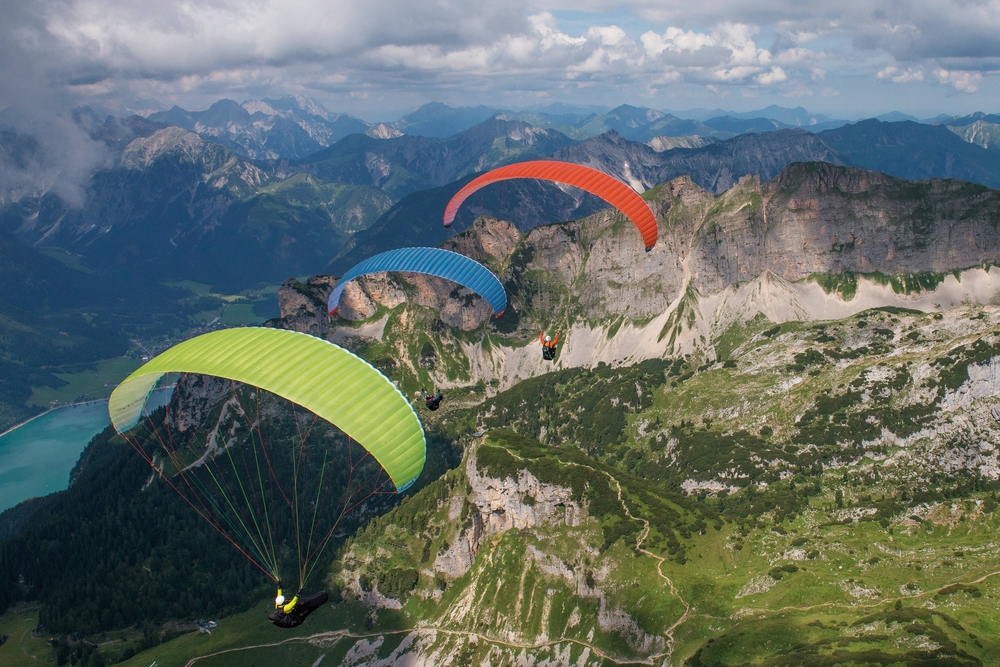
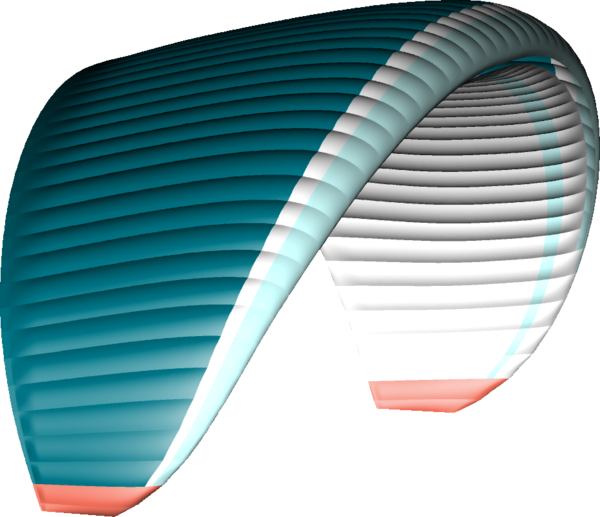 Blue
Blue
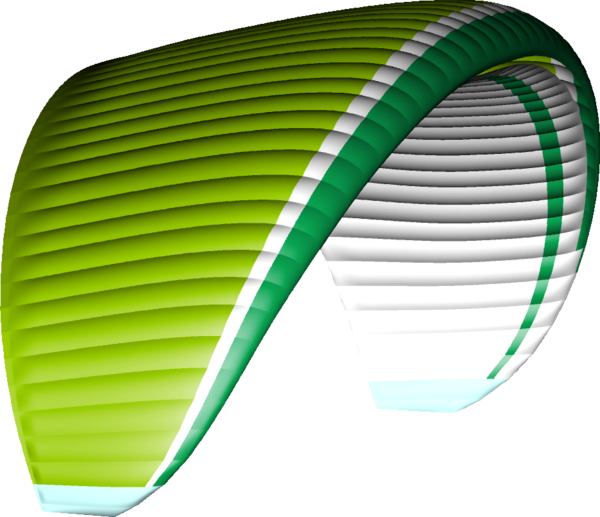 Lime
Lime
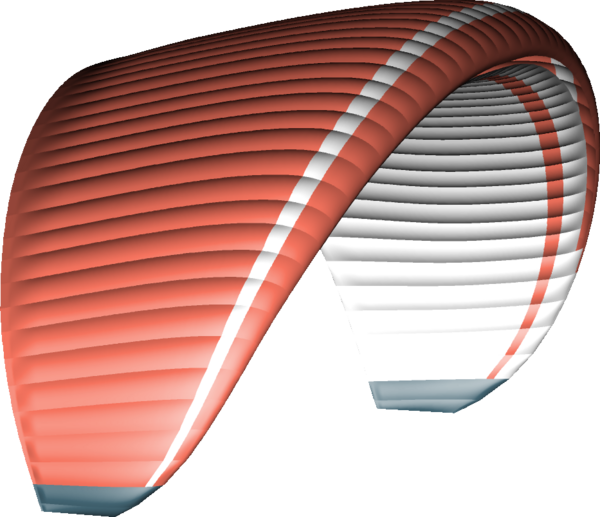 Melon
Melon
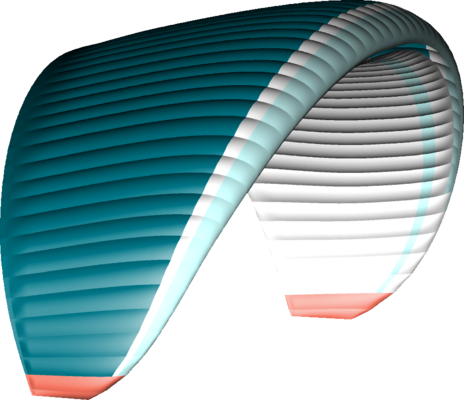







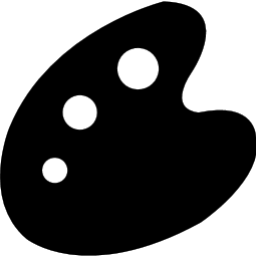

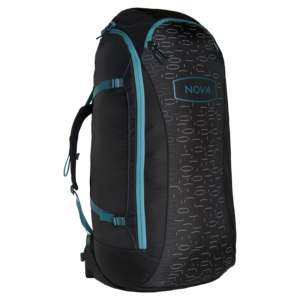 NOVA Rucksack.
NOVA Rucksack.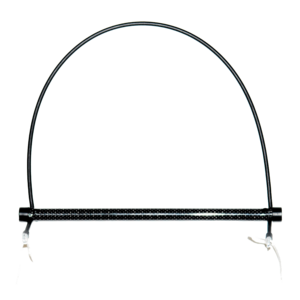 Speed system.
Speed system.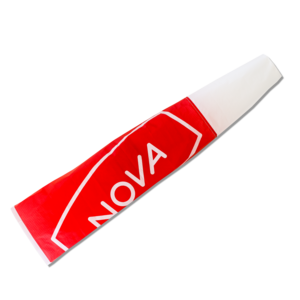 NOVA windsock.
NOVA windsock.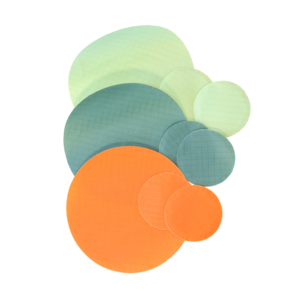 Repair kit.
Repair kit.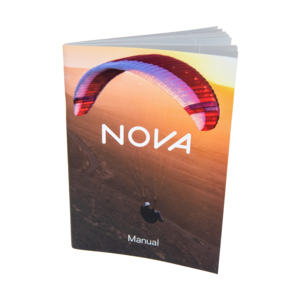 Manual.
Manual.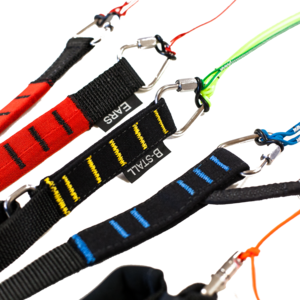 Student Riser (optional).
Student Riser (optional).